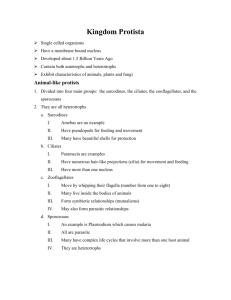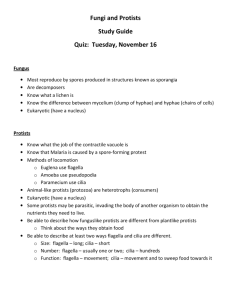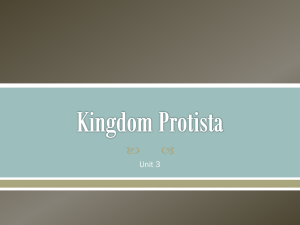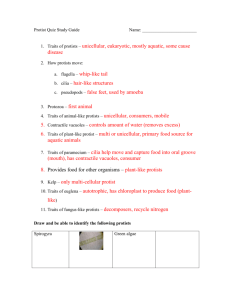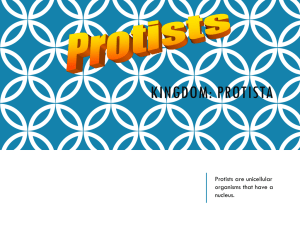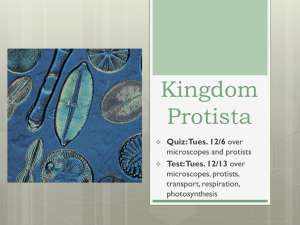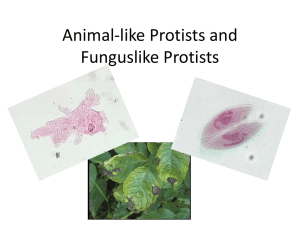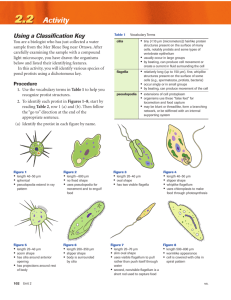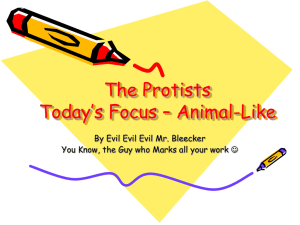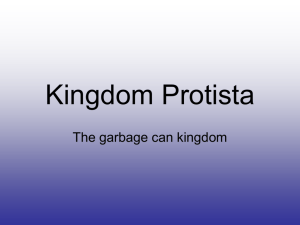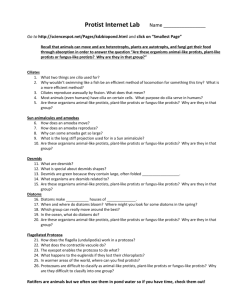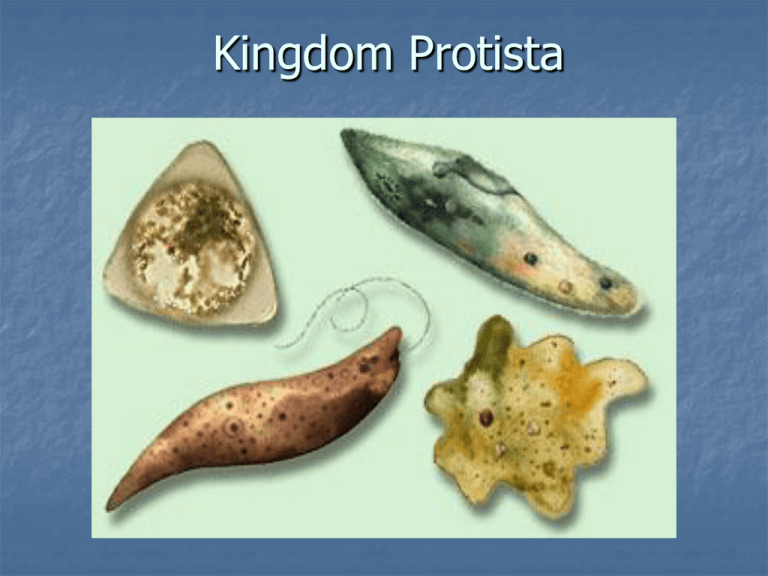
Kingdom Protista
If you look at a drop of pond water under a
microscope, all the "little creatures" you
see swimming around are protists.
What is a Protist?
All protists have a nucleus and are
therefore eukaryotic.
Are either plant-like, animal-like or funguslike.
Heterotrophs vs. Autotrophs
Animal-like and fungus-like protists and
are heterotrophs. They are organisms that
cannot make its own food
Plant-like protists are autotrophs – they
contain chloroplasts and make their own
food.
Animal Like Protists
Protozoans
are animal-like protists
(heterotrophs) grouped according to how
they move.
The word protozoa means "little animal."
They are so named because many species
behave like tiny animals—specifically, they
hunt and gather other microbes as food.
All protozoa digest their food in stomachlike compartments called vacuoles. As
they chow down, they make and give off
nitrogen, which is an element that plants
and other higher creatures can use.
Protozoa can be classified into three
general groups based on how they move:
Pseudopods
Flagellum
Cilia
Pseudopods
Pseudopods: or “false foot”
Cell membrane pushes in one direction &
the cytoplasm flows into the bulge. This
allows the protozoan to move, dragging
the rest of the cell behind it engulfing food
as they go
Amoebae
Aquatic – lives in ponds, ditches, or
slowly moving streams.
Just visible to the naked eye
Unicellular
Obtain nutrition by feeding on other
animals
have a thin cell membrane but no cell
wall.
no definite shape
EXAMPLE OF HOW
PSEUDOPODS MOVE
FLOW
PUSH
DRAG
It can form 2 pseudopods to
surround & trap food. Then form a
food vacuole to break down food in
the cytoplasm.
Flagellum
The smallest of the protozoa
Flagellates (FLAJ-uh-lits) use their flagella
to move, whip-like projections poking out
of their cells, providing a back and forth
movement
Can have one or several long flagella
Unicelluar
Has characteristics of both plants and
animals
Euglena (yoo-glee-nuh)
Move freely and feed on other organisms
Makes its own food and also obtains
nutrients by feeding as well.
Has an eyespot (to see)
When an eyespot detects light it uses
flagellum to move toward the light so that
its chloroplast can carry out
photosynthesis
Cilia
Generally the largest protozoa
Unicellular, slipper shaped
Cilia – hair-like structures - help organisms
move, get food and sense environment
Paramecium
Feeds
with the help of a structure called an
oral groove – where food is drawn in by
external and internal cilia to form a food
vacuole
Will
eat the other two types of protozoa as
well as bacteria.
Anal
pore sends out waste
Aquatic
- common in ponds and slow
moving streams
ORAL
GROOVE
Plant-like protists
Algae are eukaryotic autotrophs.
They, along with other eukaryotic
autotrophs, form the foundation of Earth’s
food chains.
They produce much of Earth’s oxygen.
Found in ponds and ditches, and even in
shallow rain puddles
Volvox
Unicellular protists that has chloroplasts
that can carry out photosynthesis
Does not live alone
Forms groups called colonies
Two small flagella that are used to move
them
Cells near the surface are specialized to
move the entire colony through water
Food source – makes its nutrients.
A Volvox is a hollow boll composed of
hundreds of flagellated cells in a single layer.

